Wetpixel DEMA reports 2013
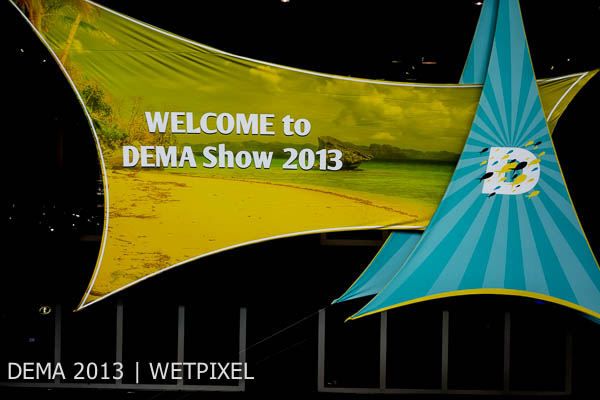
The annual trade-only dive industry show DEMA opened today at the Orange County Convention Center in Orlando, Florida. The event is unique in that it gathers almost all the underwater equipment manufacturers and businesses together under one roof. This includes the majority of those involved in underwater imaging.
One of the most active areas of the show is the Imaging Resource Center (IRC). This has a central area where various talks are delivered on imaging topics and this forms a nucleus around which the imaging companies have their booths.

In previous years, these tended to be every concentrated, but they do seem more spread out this year.
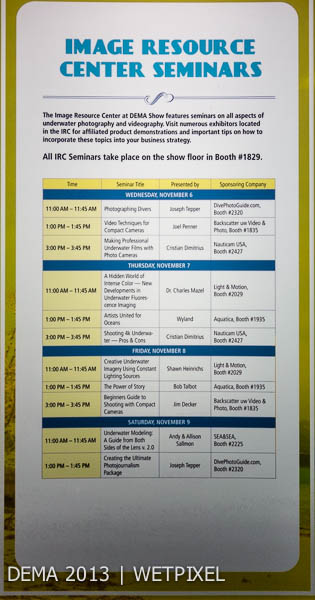
Abi Mullens and I have spent the day visiting the booths around the IRC, and getting heavily side tracked by meeting so many people. In many ways, DEMA is about meeting and talking to people and so apart from the business side, the show serves as a great meeting place.
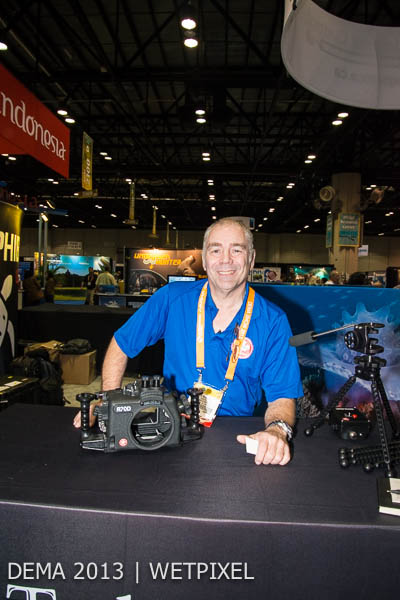
Aquatica
Our first visit was with Jean Bruneau of Aquatica. Their booth was in the center of the IRC and, in contrast to previous years, had a more open plan, island style. Jean showed us their new housing for the Canon EOS 70D:
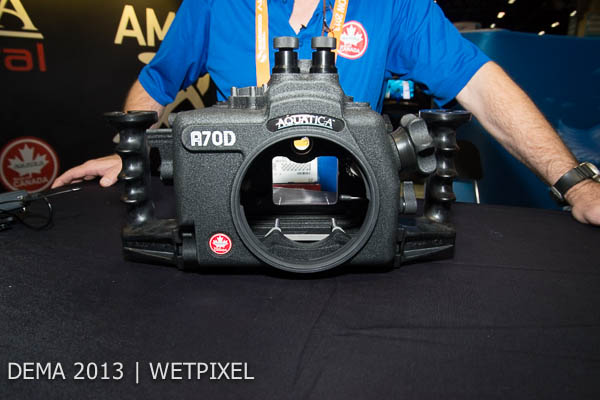
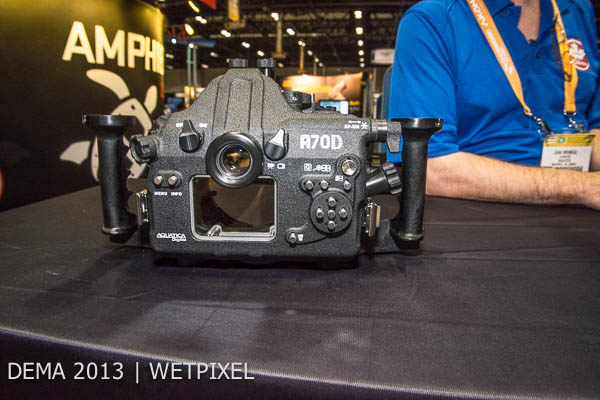
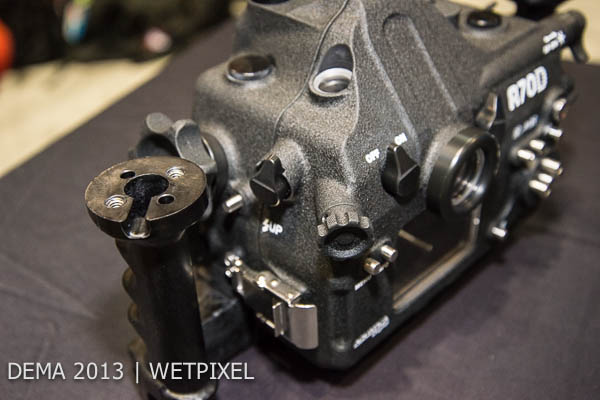
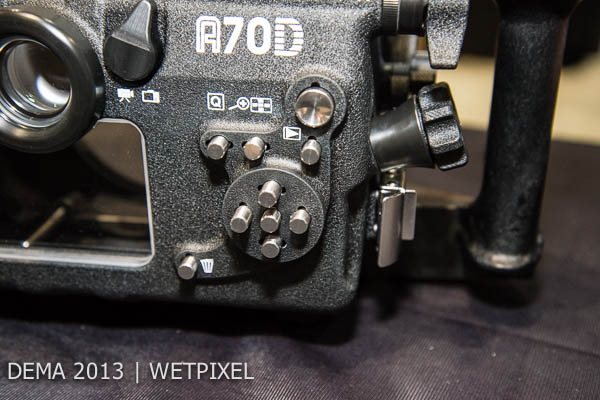
It features many of the traditional Aquatica control designs and has a choice of strobe triggering options
<center
Jean also showed us Aquatica’s new vacuum leak detection and prevention system. This consists of a circuit board that is mounted within the housing, which has a switch that activates colored LEDs.
A fitting is inserted into a bulkhead on the housing, to which a vacuum pump can be attached.
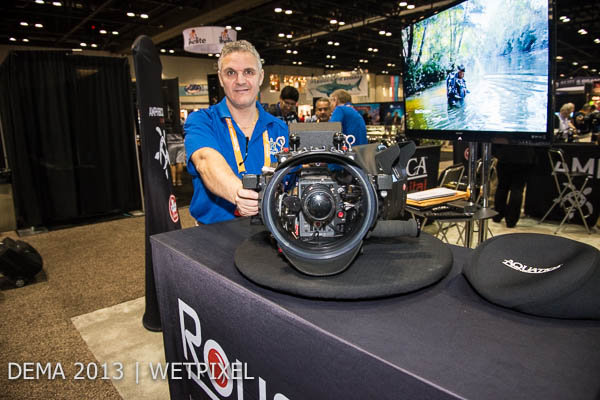
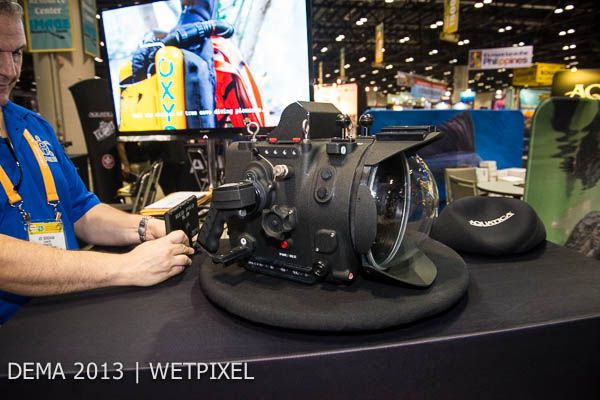
Aquatica also owns the video housing manufacturer Amphibico and Joe Bendahan talked us through their Rouge housing for the RED Epic and Scarlet cameras. It is controlled via buttons on the grips, and Joe pointed out that the company was the first to be given access to RED’s proprietary remote control codes to allow them to do so. While we were discussing future plans, Joe mentioned the Sony FS100 as being a candidate for a new housing. When I mentioned its white balancing issues, he made an interesting observation that people were having some similar problems with the REDs, as the cameras tried to add colors in that were not there due to depth and hence giving some weird color rendition.
Joe was showing some stunning cave diving footage from Divers Of The Dark on the stand.

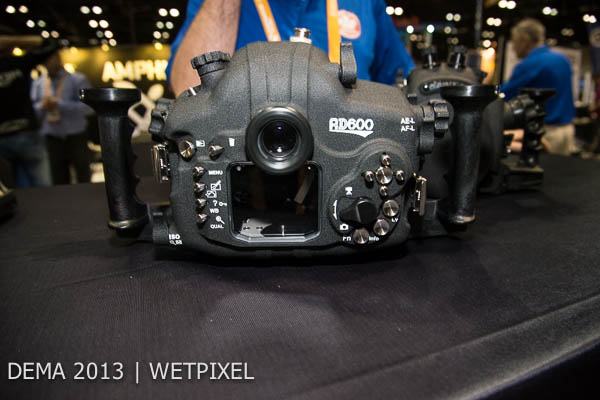
Jean also showed us Aquatica’s new housings for the Nikon D7100 and D600/610. In common with many of the housings at the show, there are no compatibility issues between the Nikon D600 and D610.
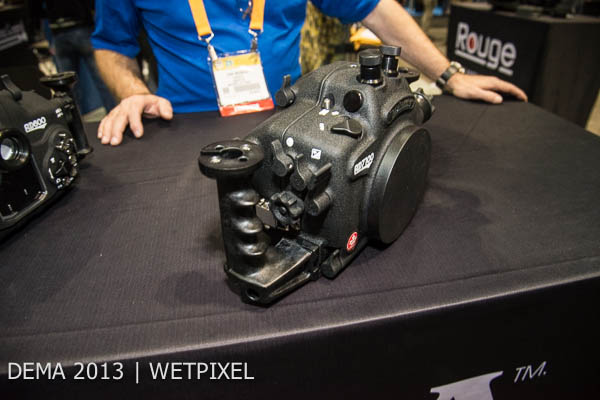
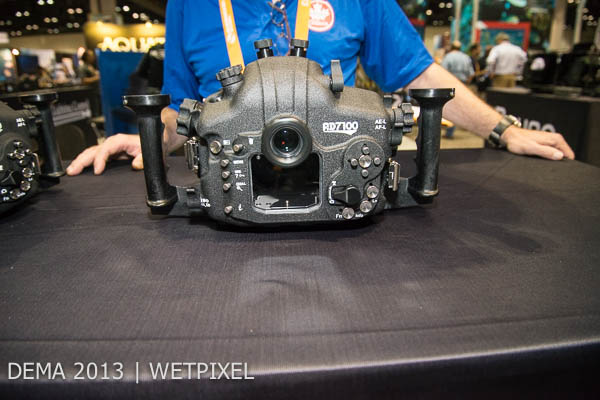
The housing feature a redesigned camera saddle that no longer needs a coin or screwdriver to attach them onto the housing.
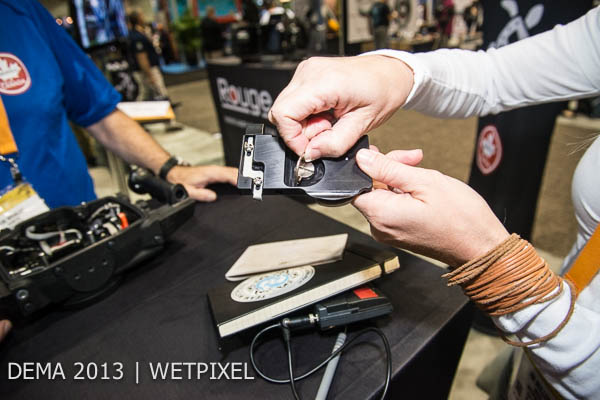
In addition, Aquatica has cleverly routed the the Fn control arm through the saddle onto a button the the rear of the housing.
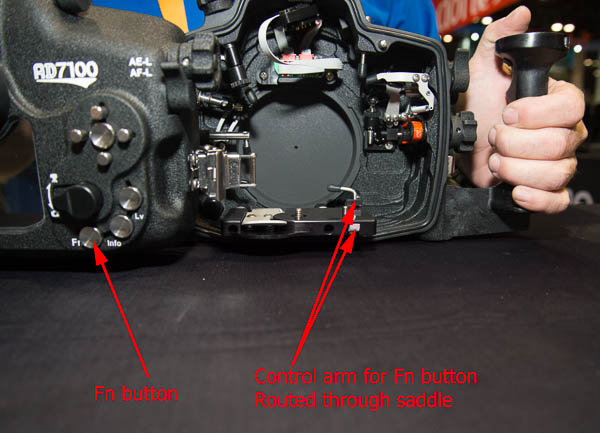
This makes this control considerably more accessible and usable when the user has the camera up against his or her eye.
GoPro
Although GoPro’s booth is separate from the Imaging Resource Center, they are not hard to find. There is a lot of energy coming from that section of the show floor (and especially at the 3pm giveaway!). We met up with Katie Kilbride, who walked us through the features of the new GoPro Hero 3+ Black.
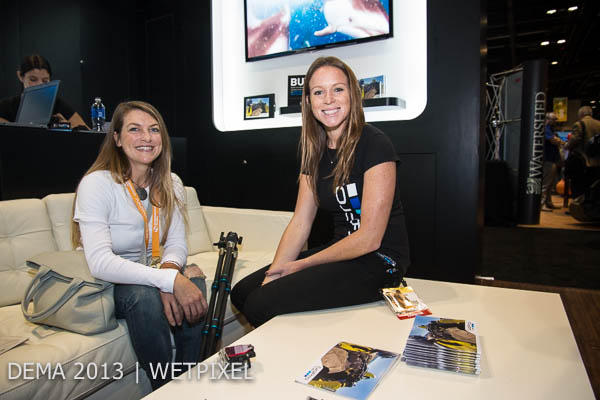
The housing is 20% smaller than its predecessor, which makes the whole thing even more compact.
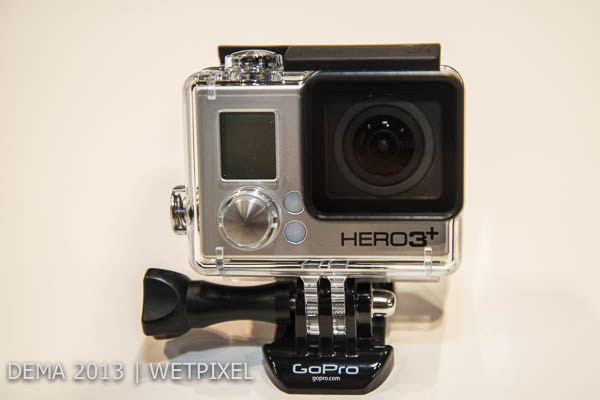
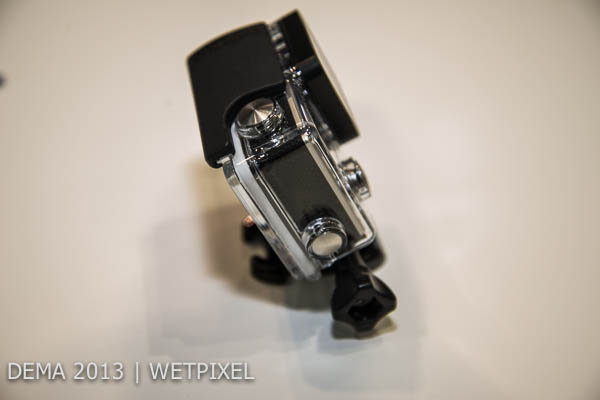
It also has 30% longer battery life, Wi-fi that is 4x faster a new SuperView wide-angle mode and a low light level mode
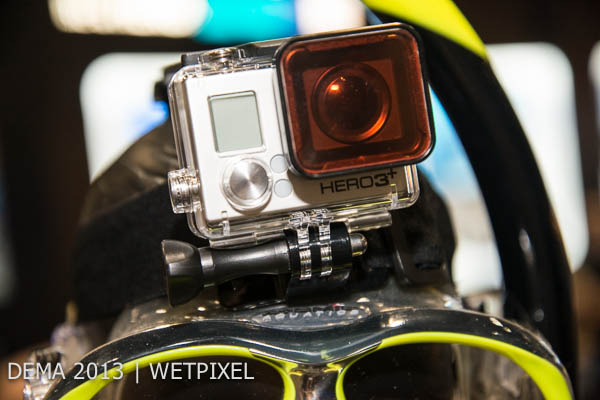
Katie also mentioned that GoPro’s plan to release new magenta and red filters for the HERO3+ in early 2014.
Backscatter
Sean Boone walked us through the new Backscatter AirLock vacuum port.
The price points for the AirLock vacuum port are $399 and $499, mechanical and electronic respectively and is user installable. One of the best features of the AirLock is that it is universal for any housing on the market.

Also, there is an added safety feature in that the port is watertight to 140 feet without the plug, but when the plug is properly installed it is waterproof to 600 feet, making this a no-brainer insurance policy against floorings.
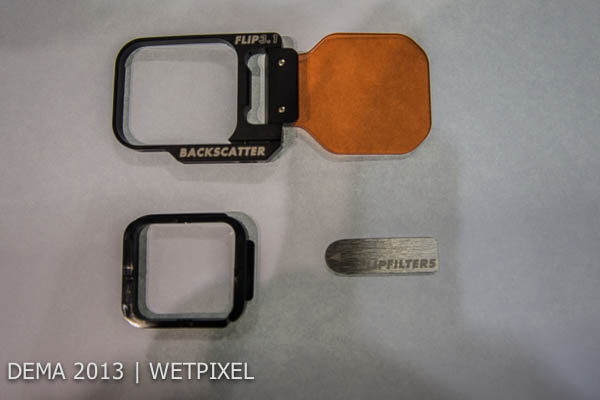

Then we checked out the GoPro Flip 3.1 filter system, which was a multitude of filters for different depths, water colors and times of day. The filter adapter houses two filters simultaneously, which is very convenient when diving to multiple depths.
Backscatter now package a sizing shim with the Flip system that allows it to be used with the new smaller HERO3+ housing, along with a spacer bar that makes using the latch on the new housing much easier when a Flip filter bracket is attached. Berkley White and Jim Decker of Backscatter actually suggest that if someone already owns the HERO3 housing, they continue to use this, even with a HERO3+ camera in it.
In addition to the color filters, the Flip system for GoPro also includes 55mm threaded filters. In addition to the bracket for the threaded filters there is a +10 macro lens which will allow the camera to focus from 8-18” underwater and to 2” on land.

There is also a super thin circular polarizer which is adjustable and does not vignette (except in the new SuperView mode) and a graduated neutral density filter.
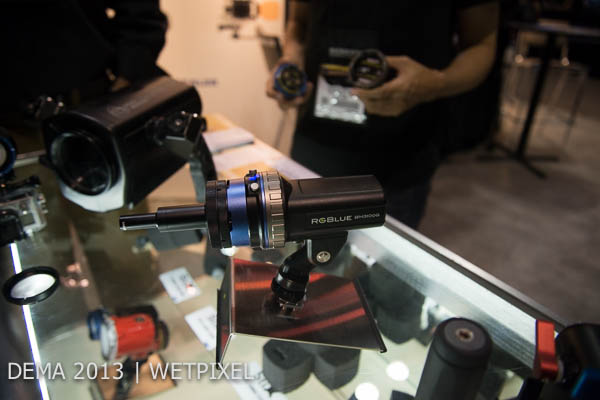
We moved on from the GoPro accessories to RGBlue underwater lighting systems, where Yoshinori Kuno walked us through the 2,000 lumen BM3100G light.
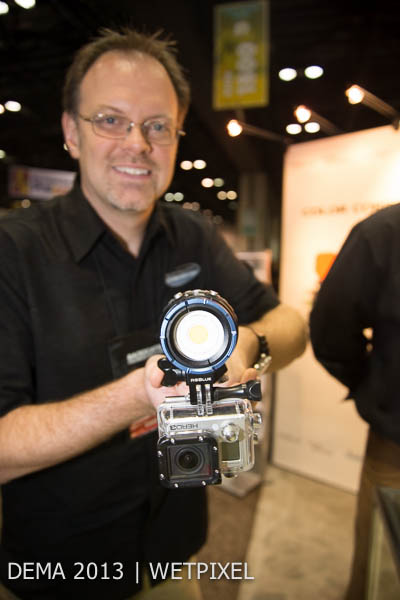
The light has a beam angle of 100 degrees with an option to condense the beam to 60 degrees. The battery back itself is waterproof when the front is removed, which is an elegant safety feature. It has a price point of $749, burns for 6.2 amp hours, but the most notable feature is the 80% cri (color rendering index).
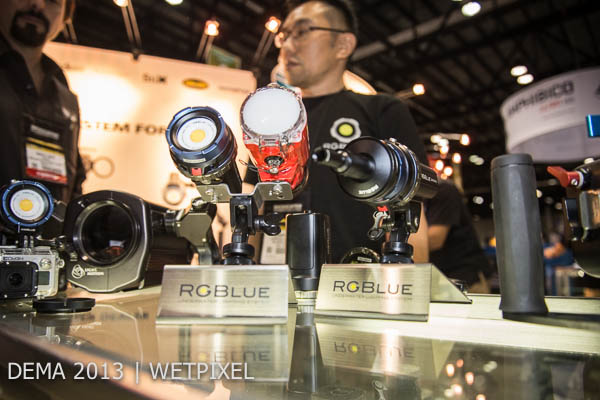
RGBlue also offer a variety of mounting options, including a double mount
Subal
We headed over to meet up with Rolf Sempert of Subal next.
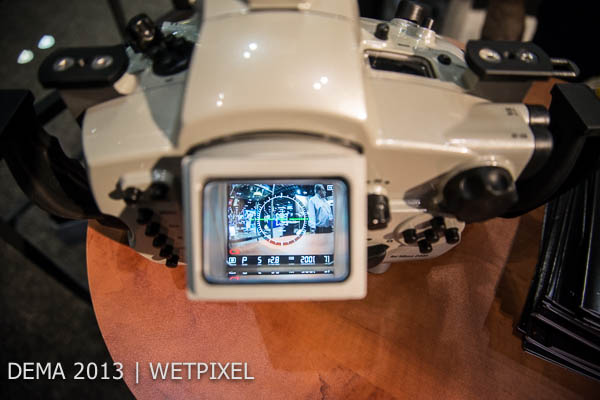
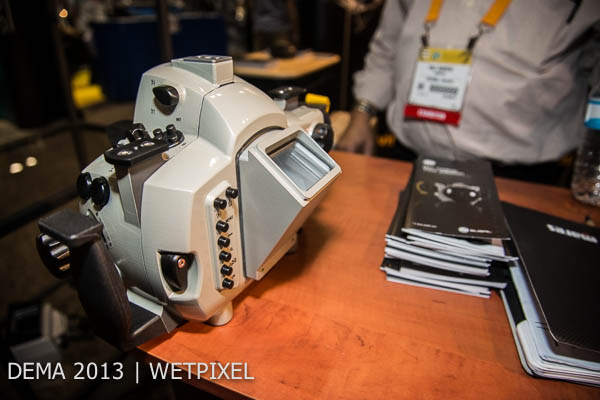
The first thing we checked out was the long-awaited Prism viewfinder, which is now shipping. This viewfinder is really a window into the SLR’s LCD screen and is designed to be self installed by the user.
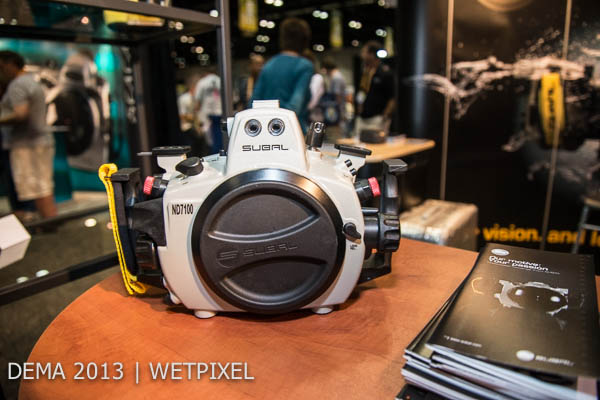
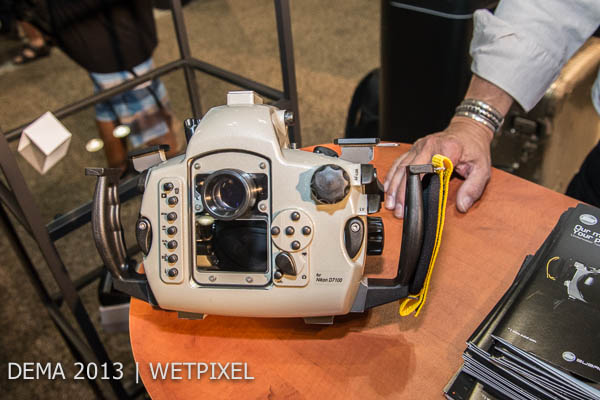
Then we went over some of the new housings including the D7100 for the Nikon 7100. As with the D7000 housing, the operator has access to all camera functions.
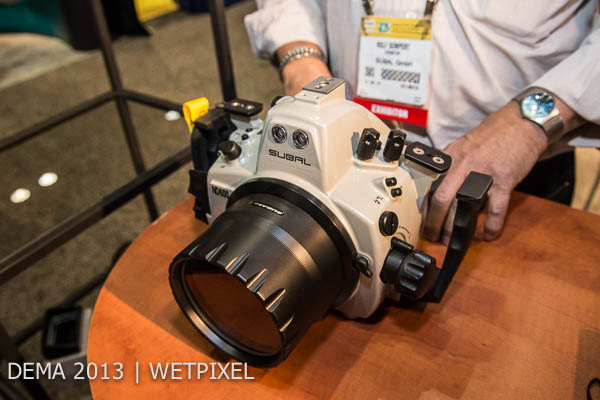
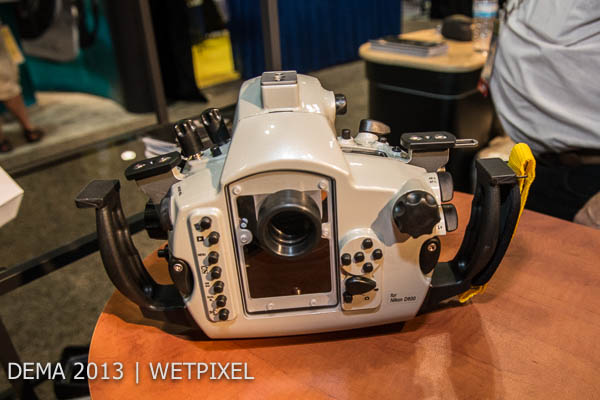
We also checked out the D600 housing, which conveniently fits the Nikon D610 as well.
There were also a couple of prototypes that we were able to see in person. The first is the housing for the Canon 1DX.

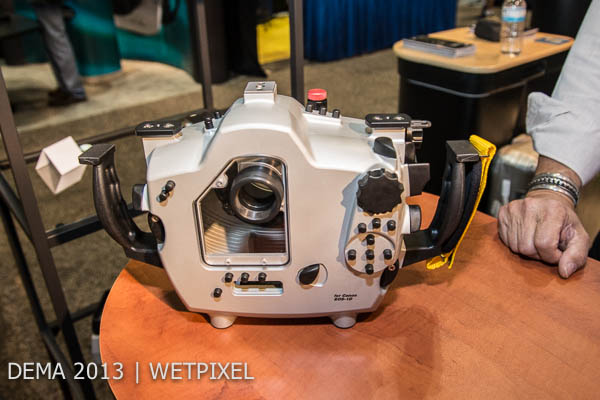
The second was for the Sony FS700.
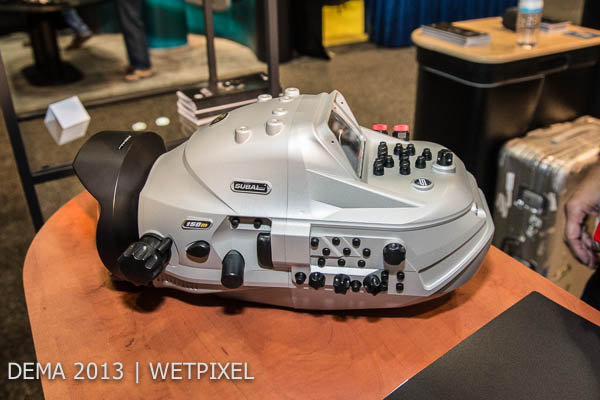
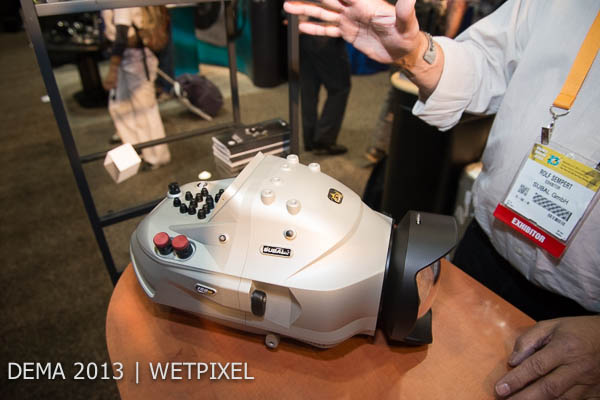
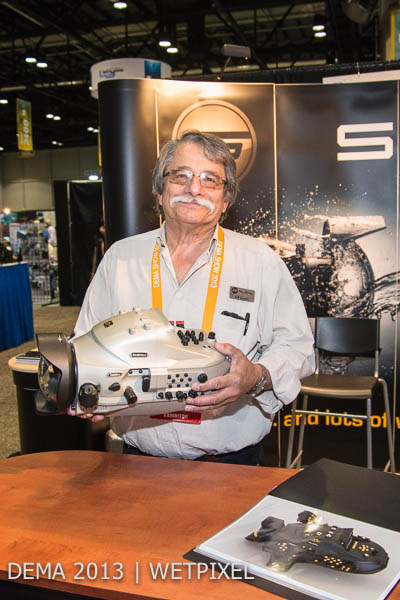
This video camera housing will have two versions, one that has a depth rating of 70m and the tech version with a depth rating of 150m. Control will be via electronic controls in the hand grips. The housings will be silver and black, respectively.
Subal’s new housings should be shipping by December this year.
Mangrove by Aditech
Our last stop of the day was with Juan Sentis Panés of Mangrove by Aditech. We checked out three new lights as well as some of their existing gear.
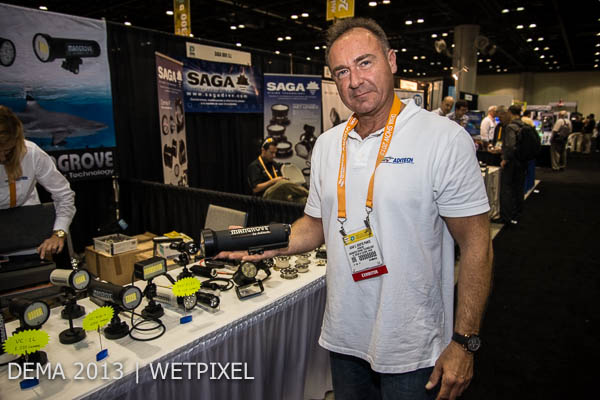
He was also showing their latest housing for the current crop of Sony camcorders, which are controlled via LANC.
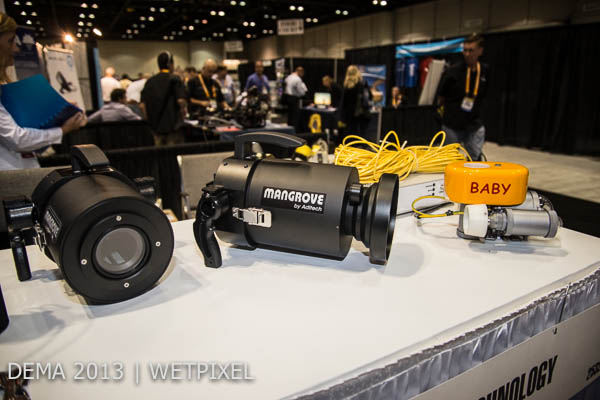
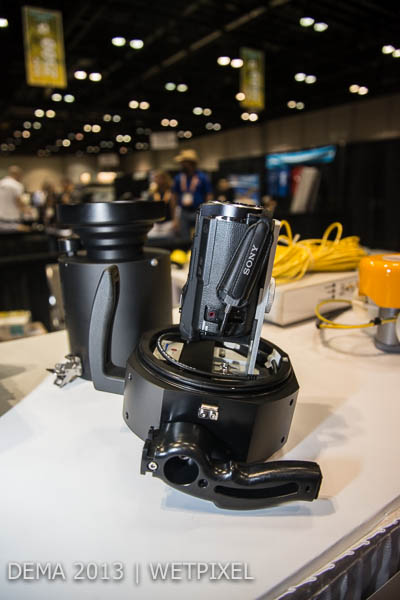
The first light was the VC-1L. This simple dive light/video light is straightforward and to the point. It is the Aditech answer to a GoPro light. At 1,000 Lumens and a beam angle of 100 degrees, this light matches well with the compact design of the GoPro cameras. And with a price of 175 Euros, it is affordable too. Another great feature of this light is the option to swap out the head to create a sharper beam angle of 10 degrees, making this an ideal dive light when not using a GoPro system.
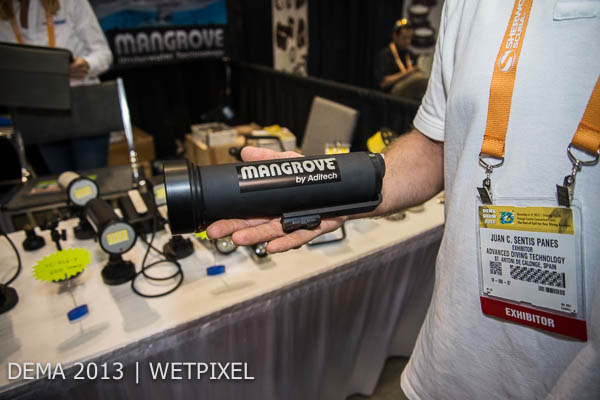
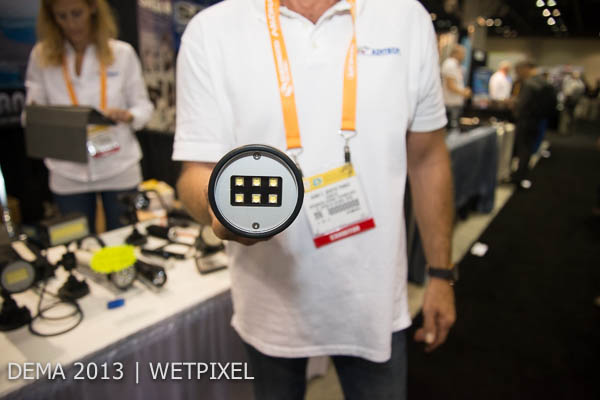
Next up was the VC-4L6-X light. With 6,000 lumens, this light definitely packs a punch. The solid-state led module array light can be used for still of video photography and has a beam angle of 100 degrees. Price is 599 Euros.
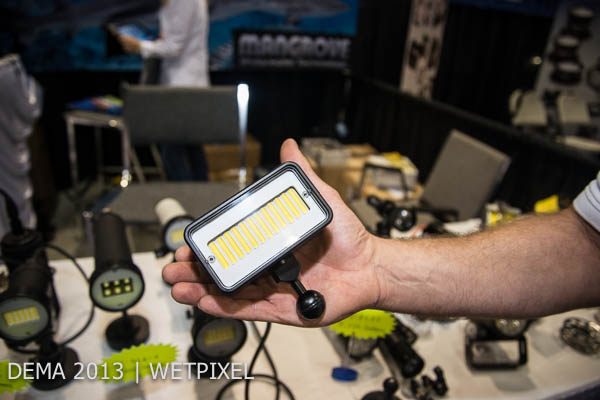
The last, and most impressive light of the bunch, was the MVS-8L12. The 80W light boasts a whopping 9,120 lumens. The solid-state LED module is designed for both photo and video. It is priced at 1,455 Euros and is shipping now.
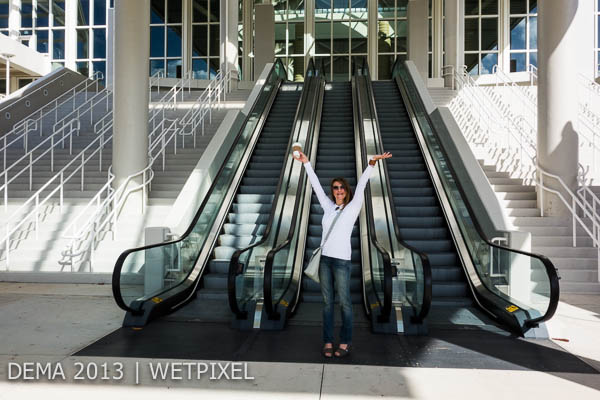
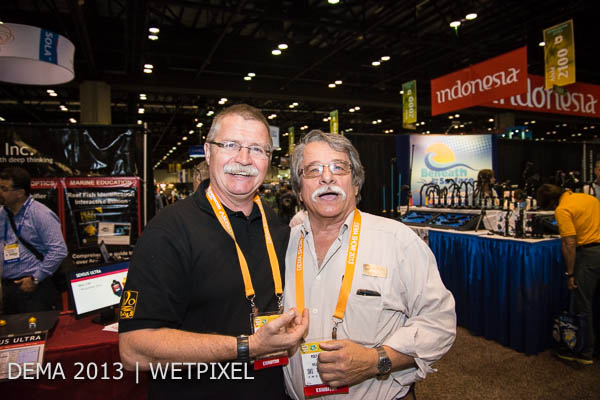
Page 1: Introduction and booth visits with Aquatica, Backscatter, GoPro, Subal and Aditec Page 2: Booth visits with Seacam, Ikelite, Watershot and Ultralite Control Systems Page 3. Wetpixel/DivePhotoGuide DEMA imaging party Page 4. Booth visits with Gates, Reefnet, Nauticam, Acquapazza, MOLI, iTorch, Keldan, Fisheye, Zen, Olympus Page 5. Booth visits with XIT404, Light and Motion, BS Kinetics, DivePhotoPro, Hugyfot, Sea & Sea, Inon